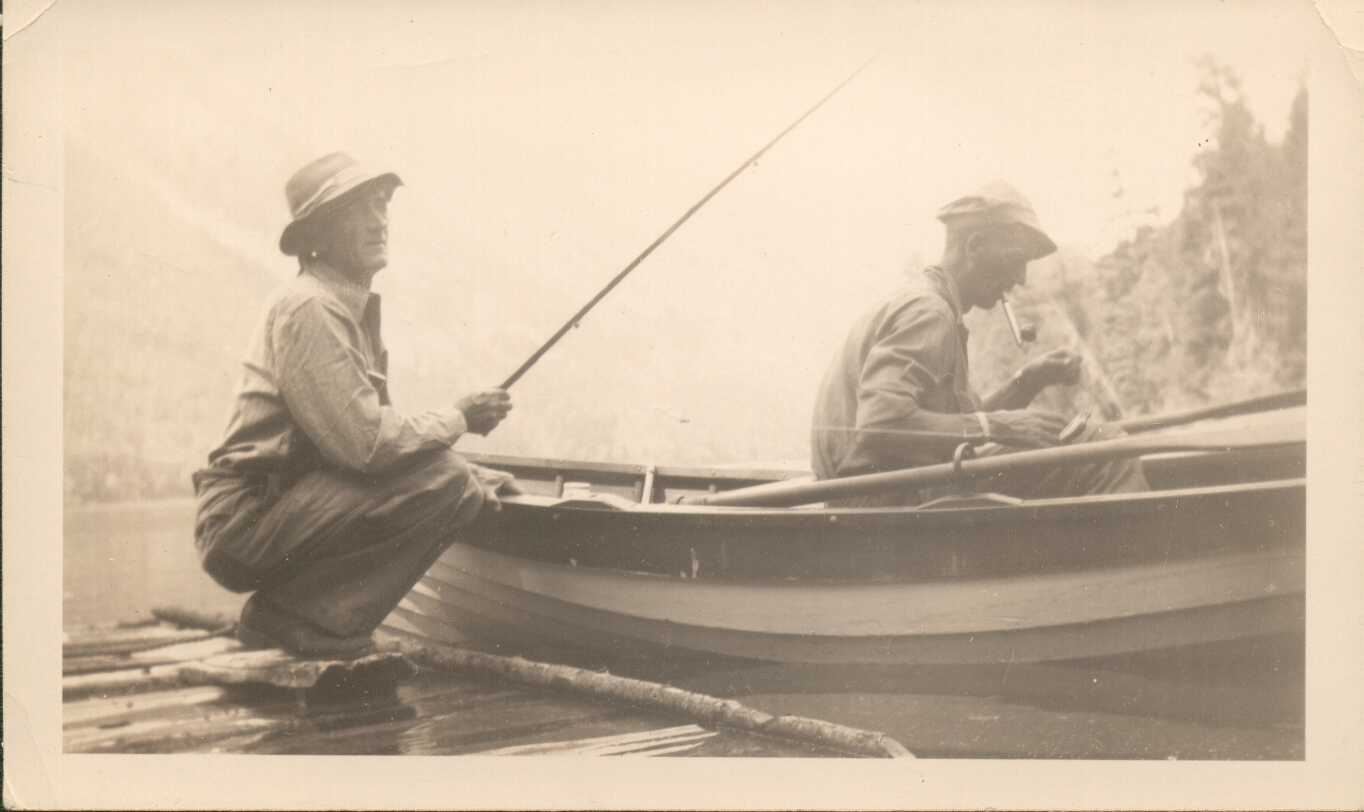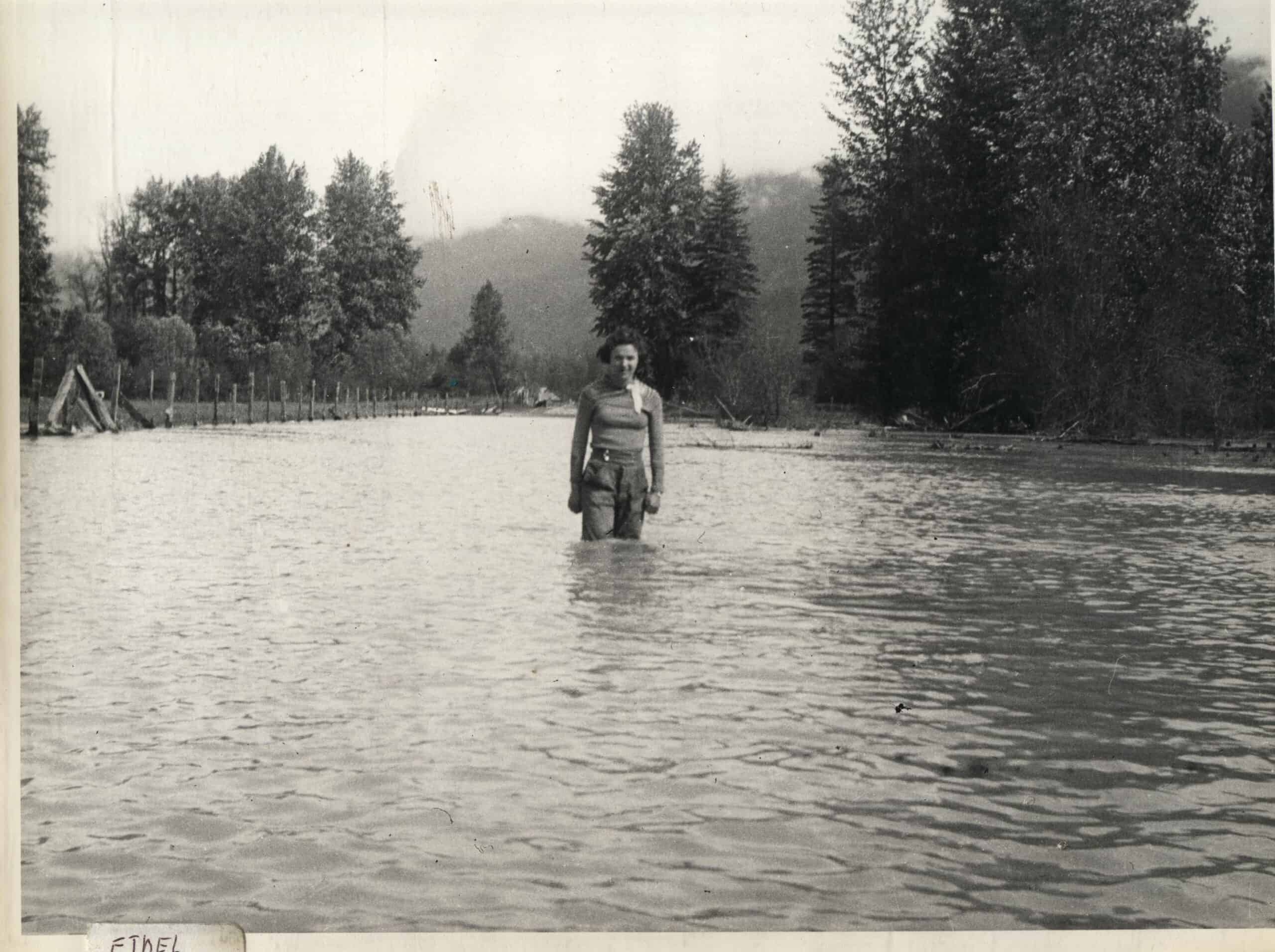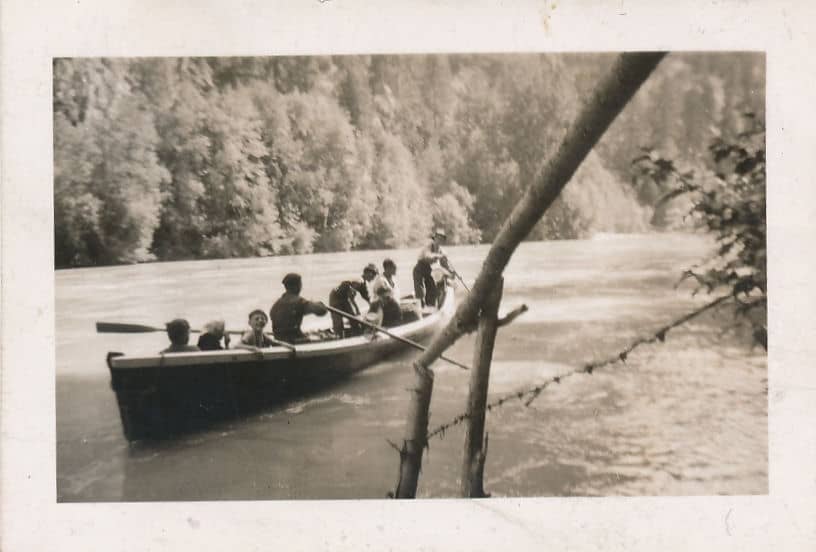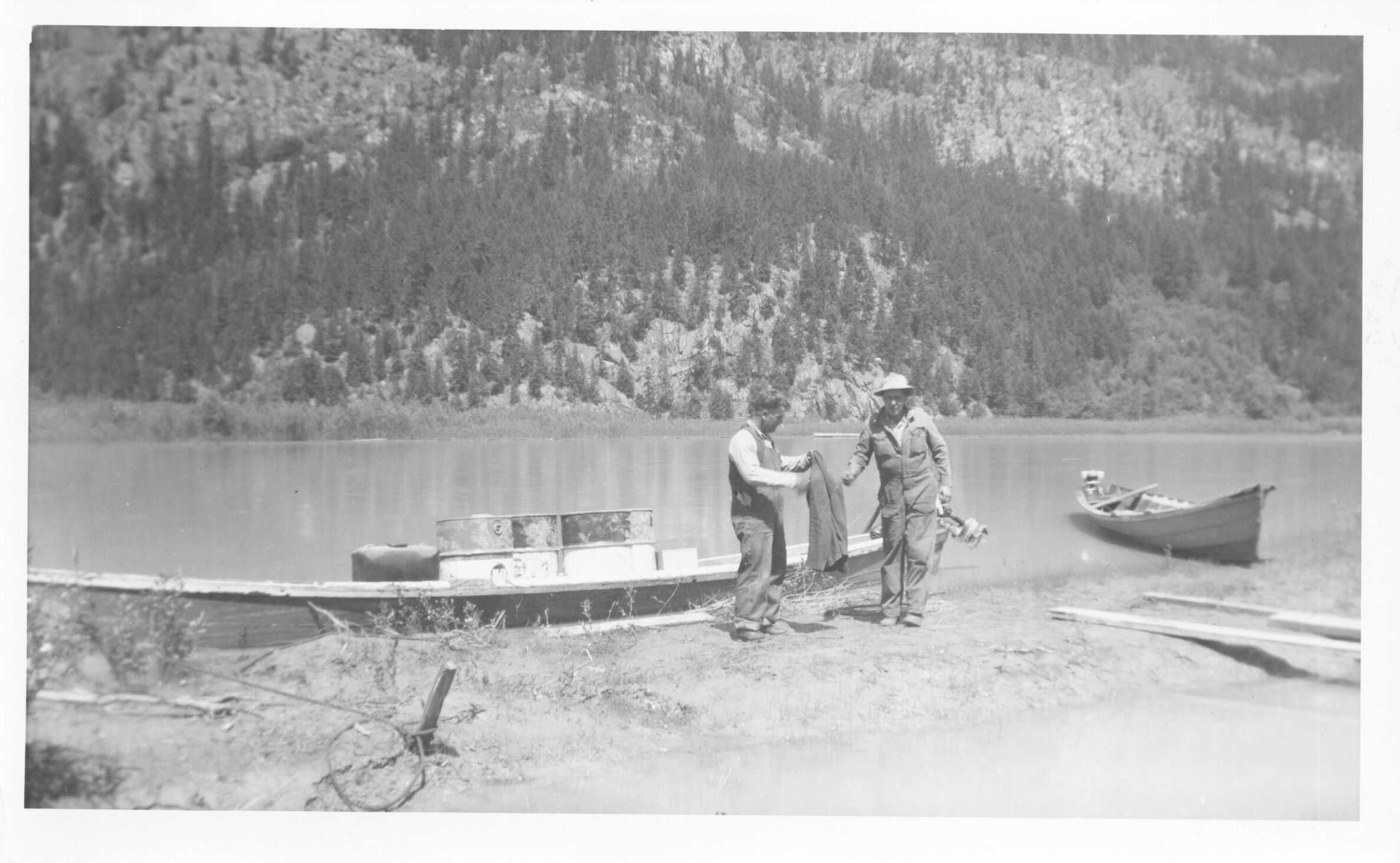Whether used for work or play, boats continue to link people to Pemberton’s landscape in meaningful ways. The enduring presence of watercraft is a reminder of how deeply nature and community are intertwined here in the valley.
Throwback Thursday: Boats, Fish, & Floods, oh my!
It’s summertime in the valley,
which means lakes are brimming with paddleboards, rivers are dotted with kayaks, and canoes glide effortlessly across calm waters. With its wealth of lakes and rivers, it’s no surprise that watercraft have long played an essential role in Pemberton. More than just vessels for recreation, boats have served as crucial tools for travel, transport, and survival.
Fishing, in particular, has been both a livelihood and a way of life. Pemberton is well known for its abundant fishing opportunities, especially for salmon. An excerpt from The People and the Land Are One: The Lil’wat Nation Fact Book offers deeper insight into the cultural and spiritual importance of salmon in the valley:
“Our ancestors were accomplished fishers; salmon and trout were mainstays of our traditional diet. Salmon, it was believed, were supernatural beings, who came every year to give their flesh to the people who were then obliged to treat them properly. The salmon were cooked in a special way and their bones carefully returned to water in a sacred ritual. This ceremony is still carried out today.”

Of course, recreational watercraft has also long played a vibrant role in the Pemberton Valley’s history. The Pemberton Canoe Association, a beloved part of the local community, is a local gem. From 1996 onwards, a series of different teams ultimately led to the official incorporation of the Pemberton Canoe Association in 2004.
Since its establishment in 2004, The Laoyam Eagles junior dragon boat crew has proudly represented Canada in international competitions. The team has also nurtured athletes who have gone on to compete at both the provincial and national levels. The Pemberton Canoe Association has played a vital role in shaping Pemberton’s history of sport and recreation.
Beyond fishing and recreation, boats in the valley have also served a crucial role in times of crisis, providing essential transportation and access during emergencies.
In the 1940s, devastating floods swept through the Pemberton Valley, underscoring the urgent need for improved flood protection.

In response to the 1940s flood, and with support from the Federal Government under the Prairie Farm Rehabilitation Act, the Pemberton Valley Dyking District was established to oversee the construction and maintenance of dikes and other flood control measures. What once was a necessity for survival has now become a backdrop for recreation, reminding us how closely Pemberton’s past is tied to the waterways that define it.
After the flood, longboats were used to transport work crews to the narrows, where the river was dredged and narrowed to build dikes for improved flood prevention. This particular boat was a PFRA vessel operated by Sonny Taylor.


Another PFRA flood relief project in Pemberton, following the historic flood of the 1940s, was the lowering of Lillooet Lake. Extensive dredging of the narrows downstream reduced the lake level by eight feet, further steepening the river channel and improving water flow. Kayaks and Canoes were used in this project as a means of travel, and transport, around the lake.

Citations:
- (A look at the past. Pemberton Valley Dyking District (en-US). (n.d.). https://www.pvdd.ca/pemberton/history)
- (https://publications.gc.ca/collections/collection_2017/eccc/En39-21-1986-eng.pdf)
History & Archives. History. (n.d.). https://www.pembertoncanoe.com/about/history